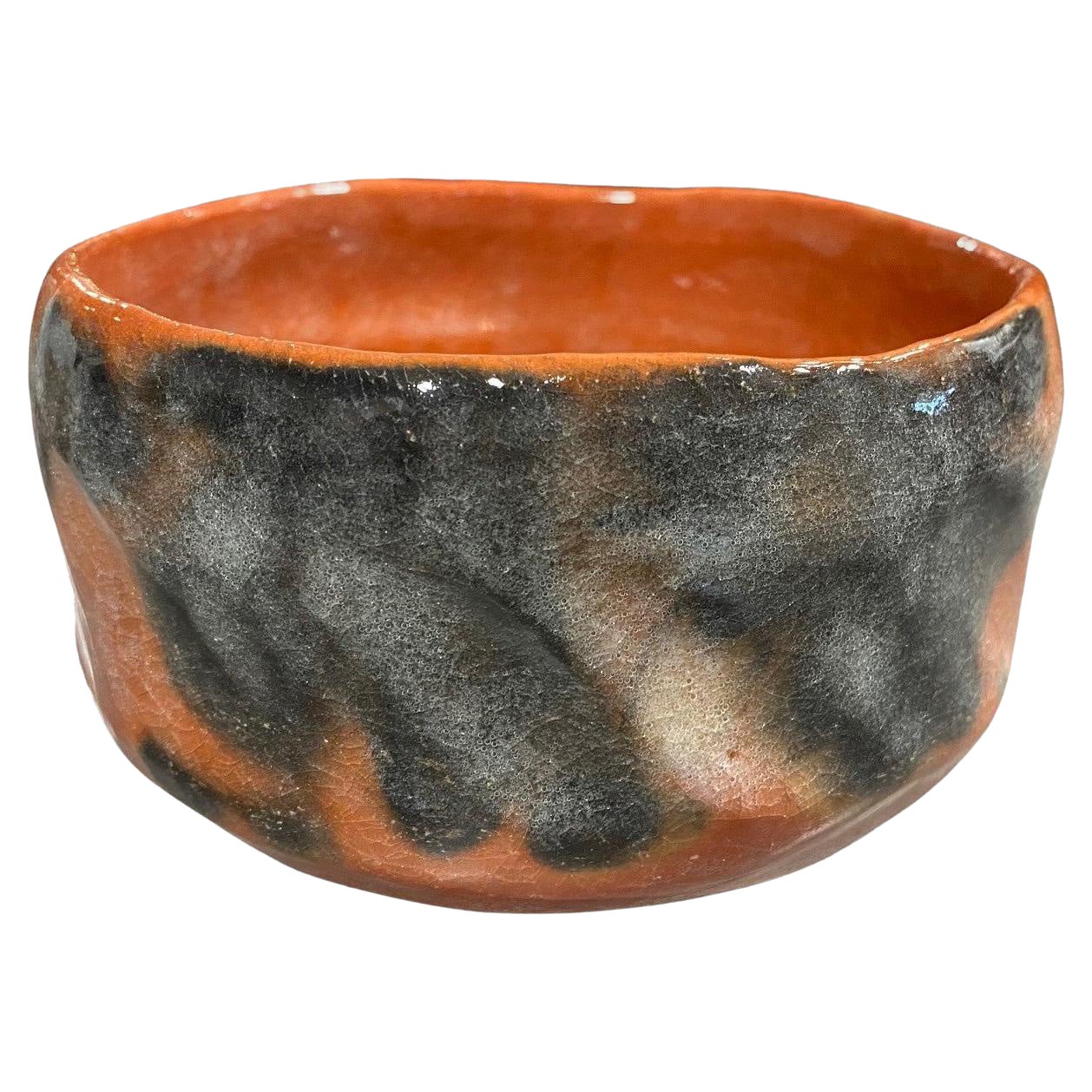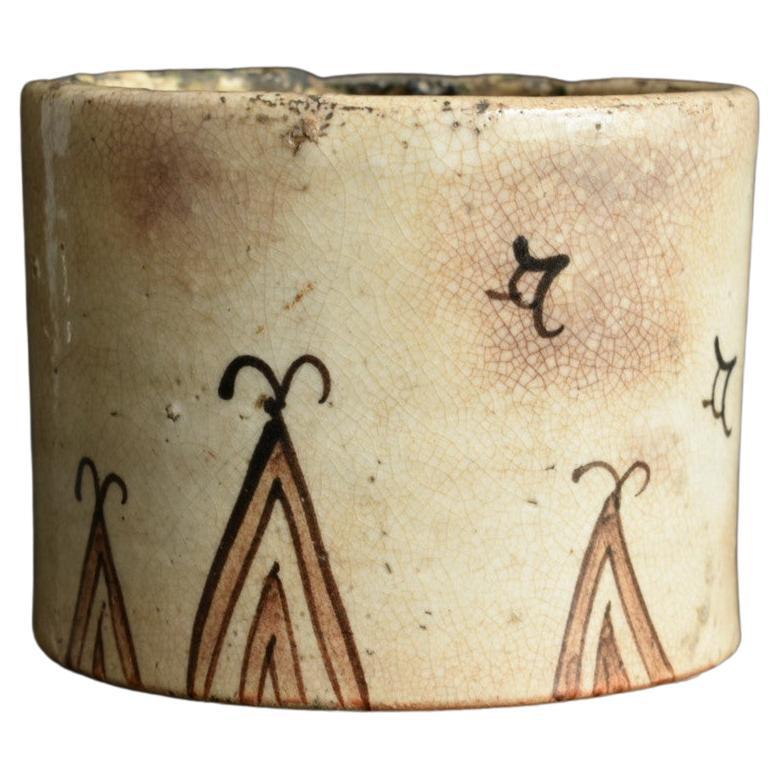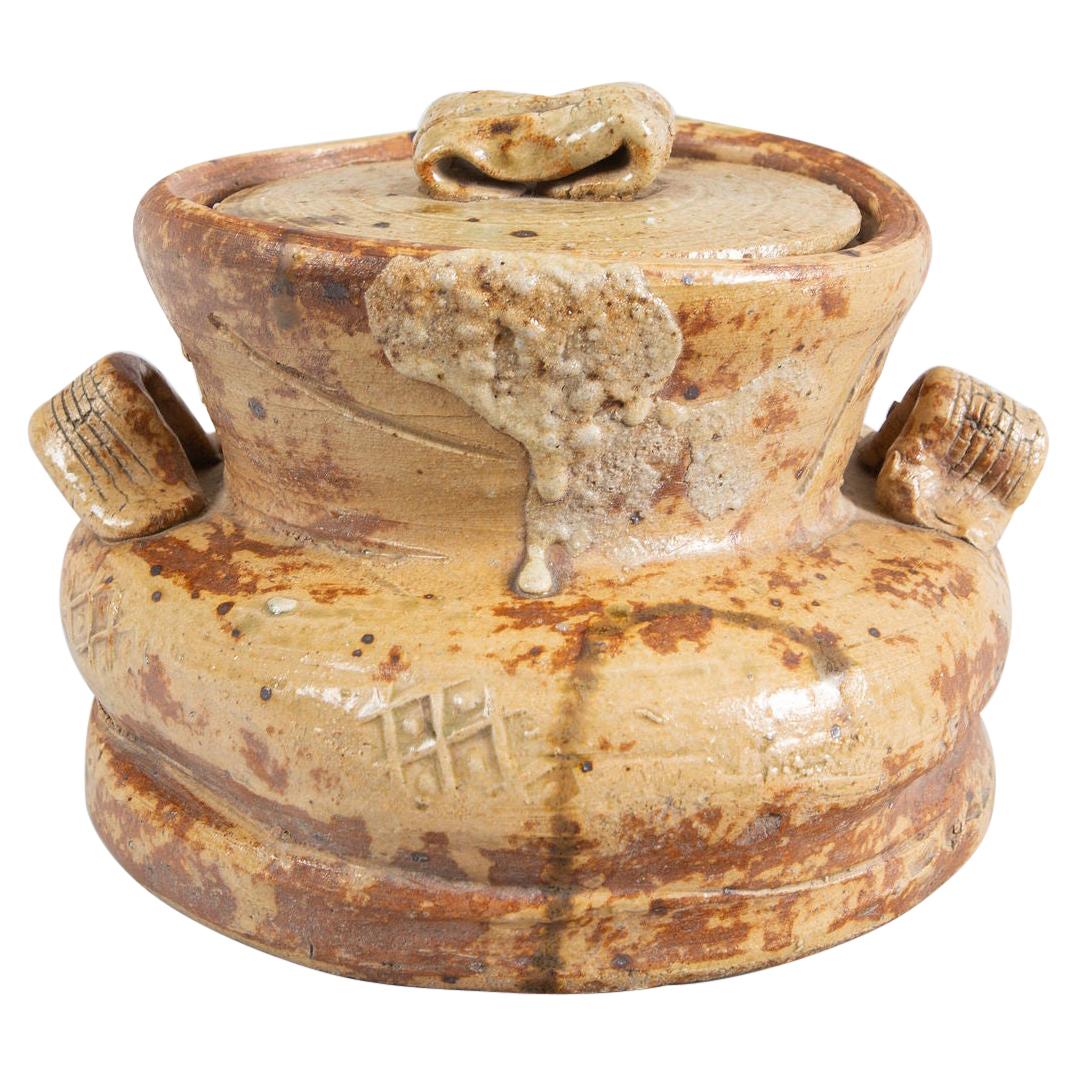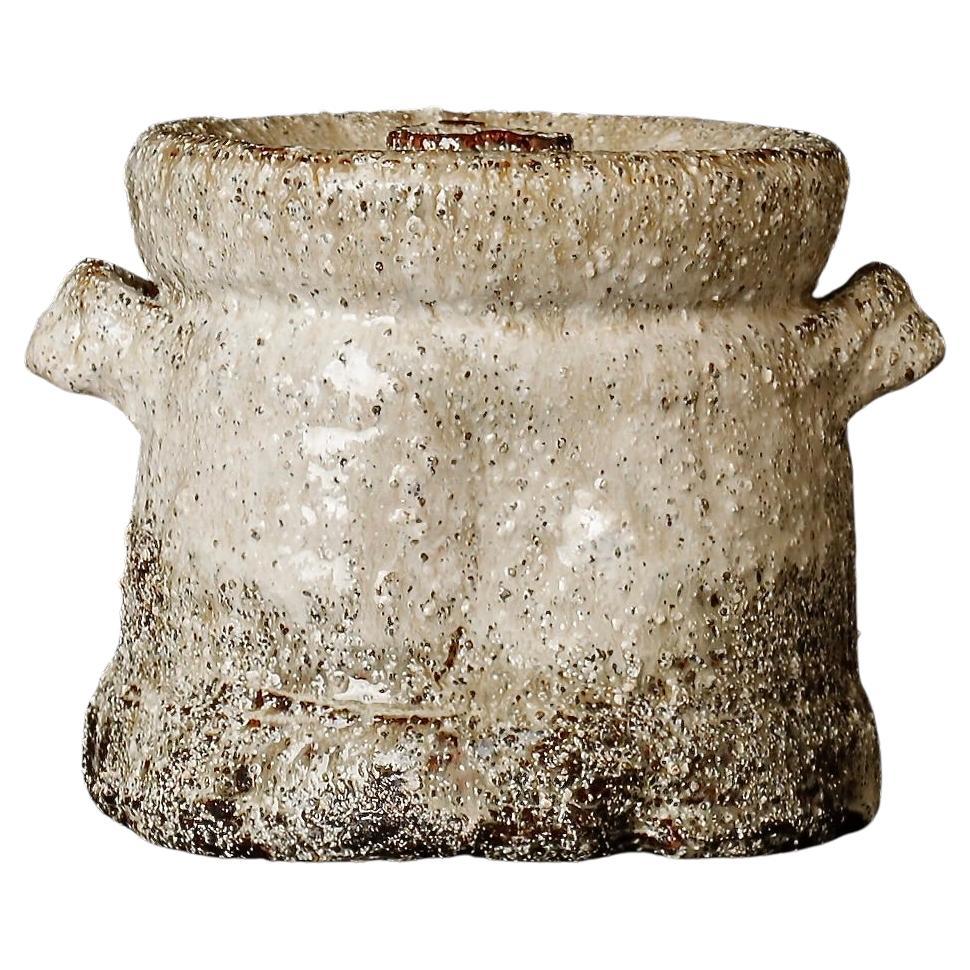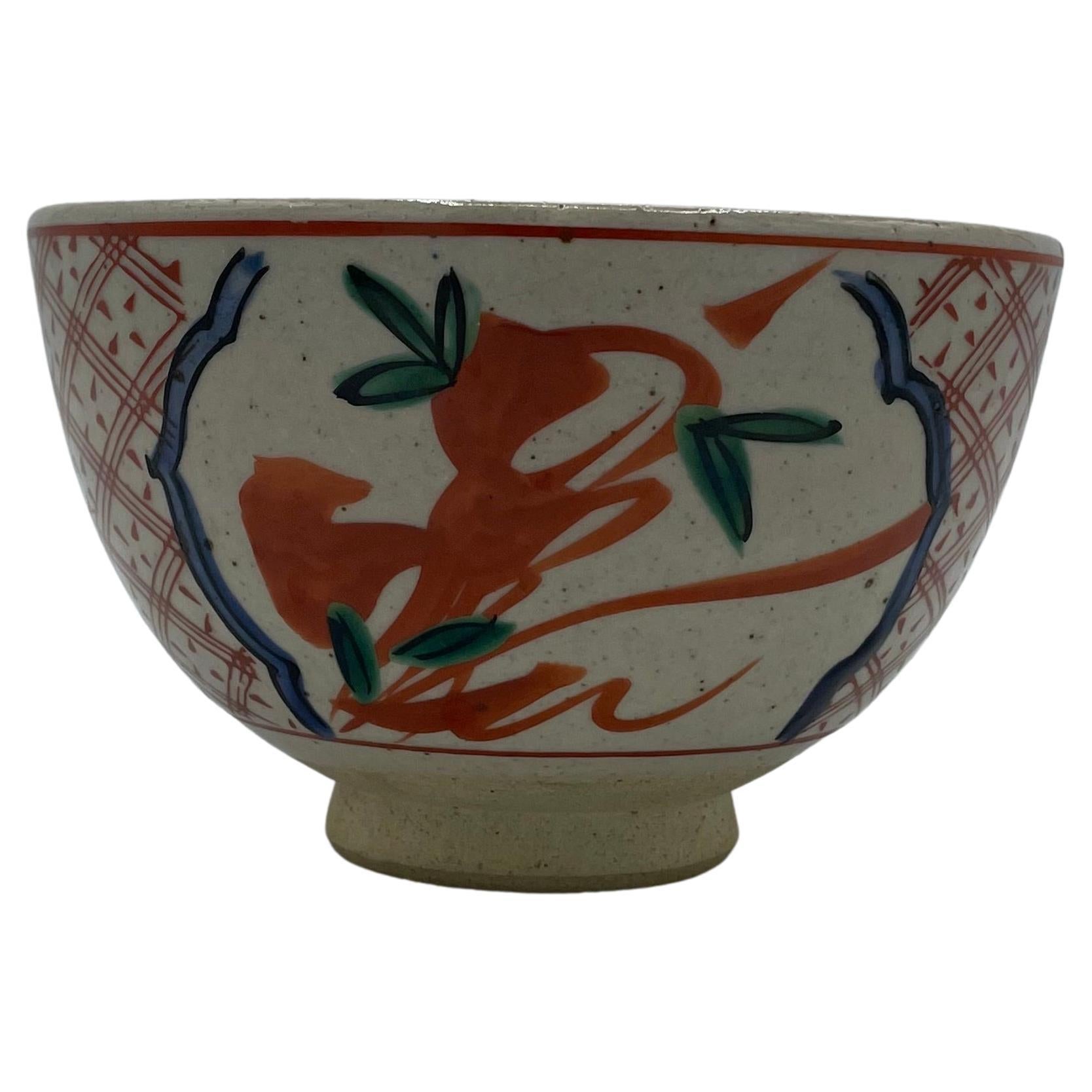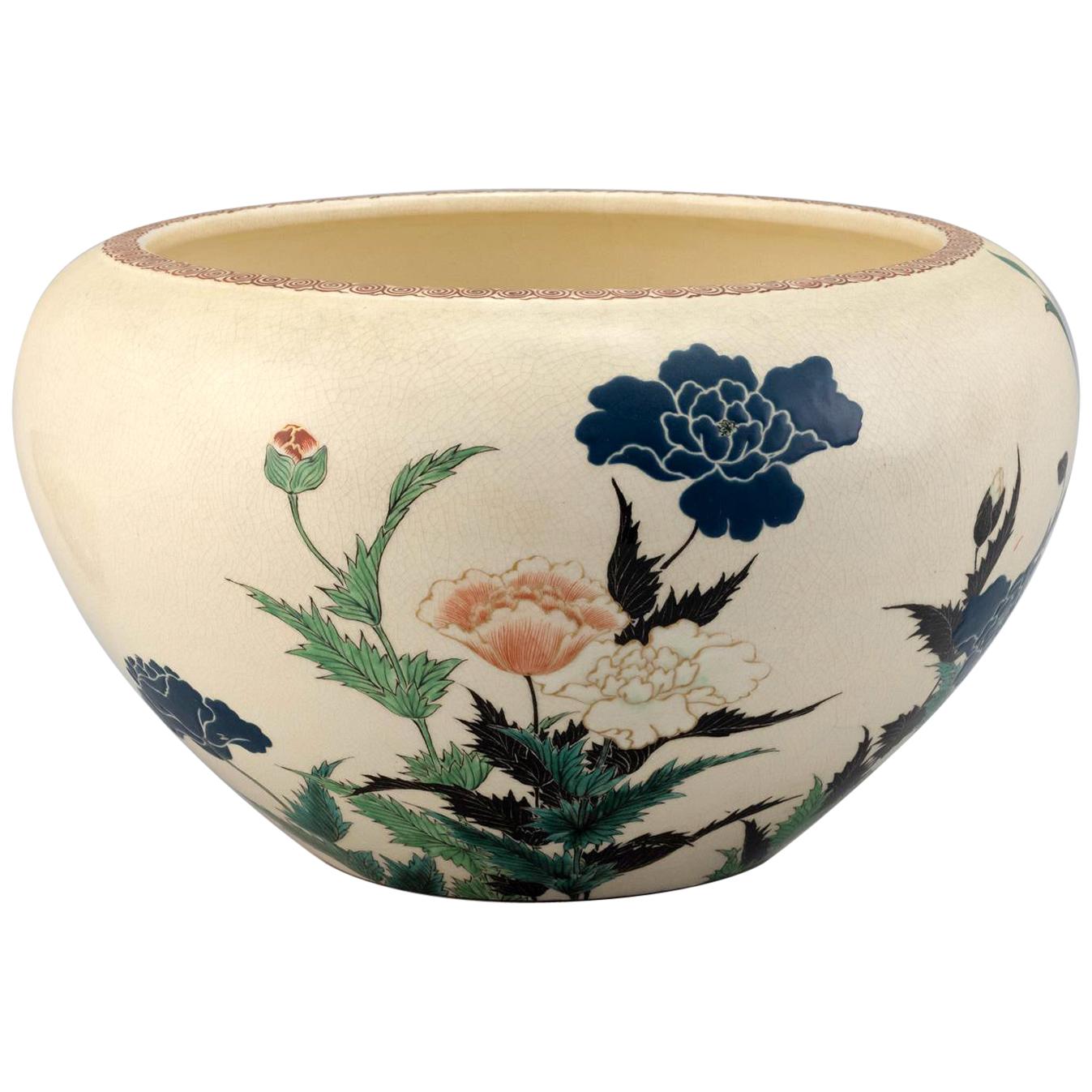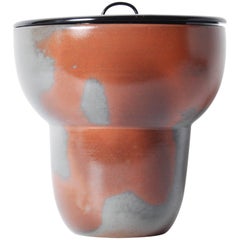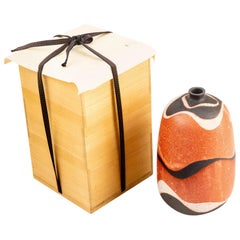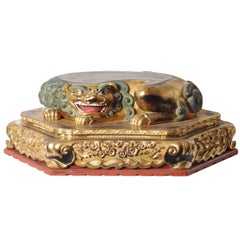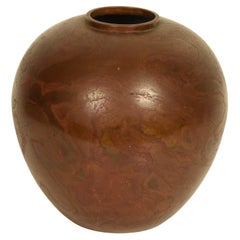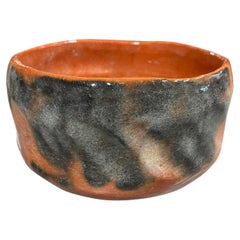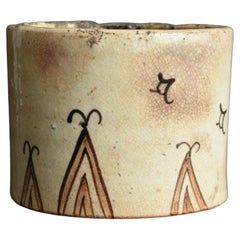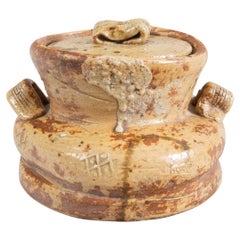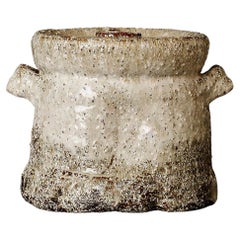Items Similar to Furo Tea Ceremony Hibachi by Raku Kichizaemon xi Keinyu, 1817-1902
Want more images or videos?
Request additional images or videos from the seller
1 of 11
Furo Tea Ceremony Hibachi by Raku Kichizaemon xi Keinyu, 1817-1902
$1,950
$2,60025% Off
£1,479.62
£1,972.8225% Off
€1,691.81
€2,255.7425% Off
CA$2,723.62
CA$3,631.4925% Off
A$3,028.30
A$4,037.7325% Off
CHF 1,581.21
CHF 2,108.2825% Off
MX$36,861.74
MX$49,148.9925% Off
NOK 20,175.54
NOK 26,900.7225% Off
SEK 18,903.52
SEK 25,204.6925% Off
DKK 12,626.27
DKK 16,835.0325% Off
Shipping
Retrieving quote...The 1stDibs Promise:
Authenticity Guarantee,
Money-Back Guarantee,
24-Hour Cancellation
About the Item
A furo tearoom brazier by Raku Kichizaemon XI Keinyu (1817-1902) decorated in bold style over a brick red glaze. The classical scene depicts men in ‘mino’ straw raincoats pulling a barge up river under the overhanging branches of an ancient willow tree.
With makers mark to base and sold with its original paulownia wood storage box.
Overall the piece is in excellent condition but has sustained several stress cracks in one corner due to heat encountered during continual use. This is typical of Japanese raku ceramics and does not compromise the stability of the piece.
The Kichizaemon family of potters was established in Kyoto during the Momoyama period (16th century). The 11th generation head of the family, Keinyu, was born the third son of a sake distiller in Kameoka over the mountains from Arashiyama in Kyoto. He married into the family and took the reins in 1845, leading it too much acclaim throughout the tumultuous Meiji period.
Dimensions: H 25cm x D 34cm.
- Creator:Raku Kichizaemon XI Keinyu (Artist)
- Dimensions:Height: 9.85 in (25 cm)Diameter: 13.39 in (34 cm)
- Style:Meiji (Of the Period)
- Materials and Techniques:Pottery,Glazed
- Place of Origin:
- Period:
- Date of Manufacture:Unknown
- Condition:Wear consistent with age and use. Piece is in overall good condition but does have several cracks around its rim due to heat from use, these do not interfere with its structural stability, please contact us for additional photographs.
- Seller Location:Prahran, AU
- Reference Number:Seller: C151481stDibs: LU125627329273
About the Seller
5.0
Vetted Professional Seller
Every seller passes strict standards for authenticity and reliability
Established in 1979
1stDibs seller since 2015
81 sales on 1stDibs
- ShippingRetrieving quote...Shipping from: Prahran, Australia
- Return Policy
Authenticity Guarantee
In the unlikely event there’s an issue with an item’s authenticity, contact us within 1 year for a full refund. DetailsMoney-Back Guarantee
If your item is not as described, is damaged in transit, or does not arrive, contact us within 7 days for a full refund. Details24-Hour Cancellation
You have a 24-hour grace period in which to reconsider your purchase, with no questions asked.Vetted Professional Sellers
Our world-class sellers must adhere to strict standards for service and quality, maintaining the integrity of our listings.Price-Match Guarantee
If you find that a seller listed the same item for a lower price elsewhere, we’ll match it.Trusted Global Delivery
Our best-in-class carrier network provides specialized shipping options worldwide, including custom delivery.More From This Seller
View AllJapanese Bizen Pottery Mizusashi with Mottled Glaze and Black Lacquer Lid
By Fujiwara Rakuzan
Located in Prahran, Victoria
This elegant water jar for tea ceremony (Mizusashi), from the Okayama prefecture of Japan features striking mottled tones of grey and rust which are the result of charcoal ash staini...
Category
21st Century and Contemporary Japanese Pottery
Materials
Pottery, Lacquer
$1,031 Sale Price
25% Off
Exceptional Japanese Shino Pottery Vase by Tamaoki Yasuo
By Tamaoki Yasuo
Located in Prahran, Victoria
Shino pottery vase in deep murasaki and white by contemporary Japanese ceramic artist Tamaoki Yasuo. The vase is an iconic representation of his style. I...
Category
20th Century Japanese Ceramics
Materials
Ceramic
Rare Buddhist Carved Base for a Statue, Edo Period, 17th Century
Located in Prahran, Victoria
Rare and unusual hexagonal Buddhist base for a statue with a recumbent shi-shi (guardian lion dog), gilded and carved with inset glass eyes and painted with mineral pigments.
Most likely the base to a sculpture of Monju Bosatsu...
Category
Antique Mid-17th Century Japanese Edo Animal Sculptures
Materials
Wood
Unique Japanese Red Bronze Vase from Yamagata
Located in Prahran, Victoria
A vintage, Japanese, red bronze vase from Yamagata. Yamagata is both a city and prefecture on the main island of Honshu. While bronze work originated i...
Category
20th Century Japanese Vases
Materials
Bronze
Intricately Carved Kamakura Lacquer Box with Botanical Design by Tamerou Ono
Located in Prahran, Victoria
A vintage Japanese Tsuzuri bako, writing box. with an unusual, deeply carved relief of Japanese sarcandra glabra, a woody herbal sub-shrub native to Asia with deep green glossy leave...
Category
Mid-20th Century Japanese Lacquer
Materials
Wood
Japanese Erotic Otofuku Folk Art Carving, Late Meiji Period, circa 1900
Located in Prahran, Victoria
Rare and highly unusual Japanese Folk Art wood carving depicting the folk heroine and good luck figure Otafuku with a finely painted erotic design on the interior and a carved inscri...
Category
Early 20th Century Japanese Meiji Sculptures and Carvings
Materials
Cypress
You May Also Like
Kichizaemon Raku Seinyu XIII "13th" Signed Antique Japanese Raku Chawan Tea Bowl
Located in Studio City, CA
A wonderfully glazed, impeccably made Chawan tea bowl by famed Japanese master potter the 13th Kichizaemon Raku, Seinyu (1887-1944) who was the eldest son of Konyu - the 12th Kichizaemon of the Raku family line of potters - known as the most noted and celebrated tradition of pottery within the world of Japanese tea. Kichizaemon Raku was the 13th master to carry on the family's esteemed name and tradition. The bowl features shifting textures and deep, rich colours which radiate in the light.
The term "Raku" was derived from the site where clay was dug in Kyoto in the late 16th century. The Kanji character for Raku translates to "enjoyment" or "fun/delightful" For 15 generations it has been the title and seal used by a lineage of potters whose work formed the central tradition in Japan. This lineage believes that 'Raku' refers to the potters who use the technique, not the technique itself. In the 16th century, the first of these potters, Chojiro is said to have come under the patronage of the Japanese tea master, Sen-No-Rikyu. According to legend, in 1598 a few years after Chojiro's death, ruler, Hideyoshi Toyotomi bestowed upon his adopted son, Jokei, a golden seal with the written symbol "Raku." Both the name and the ceramic style have been passed down through the family to the present ever since. The name and the style of ware have become influential in both Japanese culture and literature. Raku ware marked an important point in the historical development of Japanese ceramics, as it was the first ware to use a seal mark and the first to focus on close collaboration between potter and patron. Other famous Japanese clay artists...
Category
Early 20th Century Japanese Meiji Ceramics
Materials
Ceramic
Japanese antique painted pottery / "Eseto" / Edo period, 1800s / Ashtray
Located in Sammu-shi, Chiba
This is a pottery called Seto-yaki, which was fired in Seto, Aichi Prefecture, Japan.
Seto is a kiln with a long history in Aichi Prefecture, Japan.
(Seto kilns are marked with red c...
Category
Antique 19th Century Japanese Edo Vases
Materials
Pottery
Iga Mizusashi 'Water Container for the Tea Ceremony'
Located in Hudson, NY
17th to 18th century Iga ware from Fushinan, Kyoto. Iga embodies the essence of tea ceremony's requirements for wabi-sabi, which appreciates the beauty in imp...
Category
Antique Early 18th Century Japanese Edo Ceramics
Materials
Ceramic
Hagi Ware Covered Mizusashi by Mashita Takashi, with Signed Tomobako
Located in Fukuoka, JP
A beautifully handcrafted mizusashi (covered water vessel) by renowned Hagi ware ceramicist Mashita Takashi (b. 1952), exemplifying the warm, tactile aesthetic and quiet refinement f...
Category
20th Century Japanese Ceramics
Materials
Ceramic
Japanese Matcha Bowl for Tea Ceremony 1990s Heisei Mizuho
Located in Paris, FR
This is a matcha bowl which we use during a tea ceremony in Japan.
There are a signature written on the bottom of this bowl 'Mizuho'.
This matcha bowl was made in Japan around 1990s ...
Category
1990s Japanese Decorative Bowls
Materials
Porcelain
Japanese Studio Ceramic Centerpiece Okumura Shozan Meiji Period
Located in Atlanta, GA
A beautifully crafted large ceramic bowl as a centerpiece by Okumura Shozan (1842-1905) in the Kyo-yaki (kyoto ware) style. A Classic ovoid form with flatly...
Category
Antique Late 19th Century Japanese Japonisme Ceramics
Materials
Ceramic
